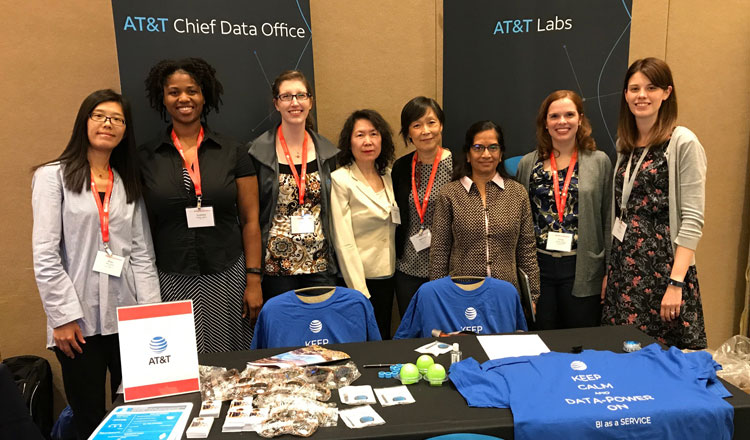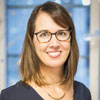
We’ve all heard how math and science are male-dominated. So, let’s give a shout-out to women in statistics. According to the American Statistical Association, 40% of undergraduate degrees in statistics go to women, and half of all master’s degrees.
I’m thinking about stats this week because we have 5 AT&T presenters at the ASA’s Women in Statistics and Data Science conference in California. Three are researchers at AT&T Labs, and 2 are data scientists at the AT&T Chief Data Office.
Here’s what they’re talking about:
Tamraparni Dasu is giving a talk called, “Wisdom comes from good data.” A great analysis can go wrong when data is missing, duplicated, misunderstood or just plain wrong.
The best statistician might combine “address” fields from different data sources and – oops – some of it was email addresses, some billing addresses, some IP addresses.
It’s a technical conference, so of course she discusses how to find the problems through regression, clustering, machine learning and more. She holds a doctorate in statistics.
Wen-Ling Hsu is talking about her research to improve online customer experience with machine learning.
Let’s face it, customers don’t like to get transferred around. Also, they increasingly like to use online chat when talking to a company like AT&T. What if we could use machine learning to figure out which specialist you really need to chat with, based on the word patterns when you contact customer chat?
Her test results reduced transfer rates and shortened the overall chat session – both of which make customers happier. She holds a doctorate in information systems.
Lauren Savage is talking about a mentoring program in our Chief Data Office called Growth for Good. It takes AT&T employees who have just earned data science nanodegrees and puts them to work immediately on a project for a non-profit.
This reinforces their skills. Just like a foreign language, if you don’t use it, you lose it.
The employee gets a professional mentor, like Lauren. Over several months, the employee works to help the non-profit analyze a problem, like which of its locations are most effective and why. Lauren has a master’s in statistics.
Olivia Hong is discussing a privacy-friendly way to learn more about the movements of people and traffic through mobile device location. She combines anonymized network data with U.S. Census block data about the device’s home base area.
Important societal issues can be studied, like which demographic groups might be most affected by a road construction project. Or maybe what kinds of people like to go to the city’s big festival. Olivia has a master’s in statistics.
Statistics may be a brighter spot for women than other tech areas, but Sydeaka Watson is concerned about downward overall trends, particularly in the computing and data fields. She is giving her thoughts on the small biases and barriers that can make a big difference.
She talks about how to keep your cool and influence people by displaying sincerity, friendliness and interest in the thoughts of others. And using data! Make your case for change with compelling, visual storytelling backed by data, she says. She, too, has a doctorate in statistics.
You can read more about AT&T women in technology here. I’m proud to be part of this team.

Kim Keating - Vice President - Data Science


